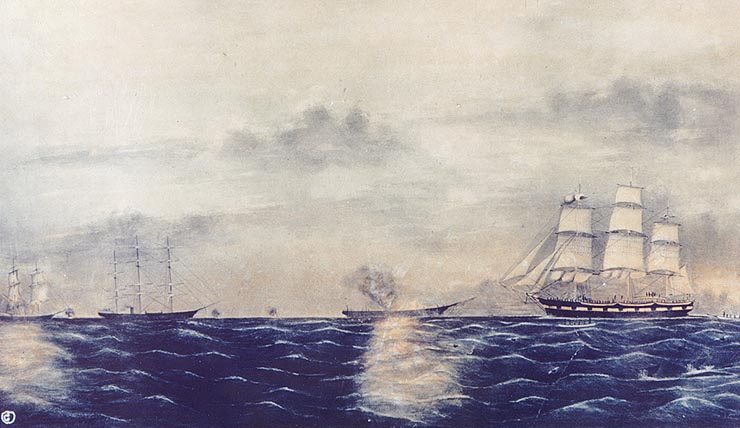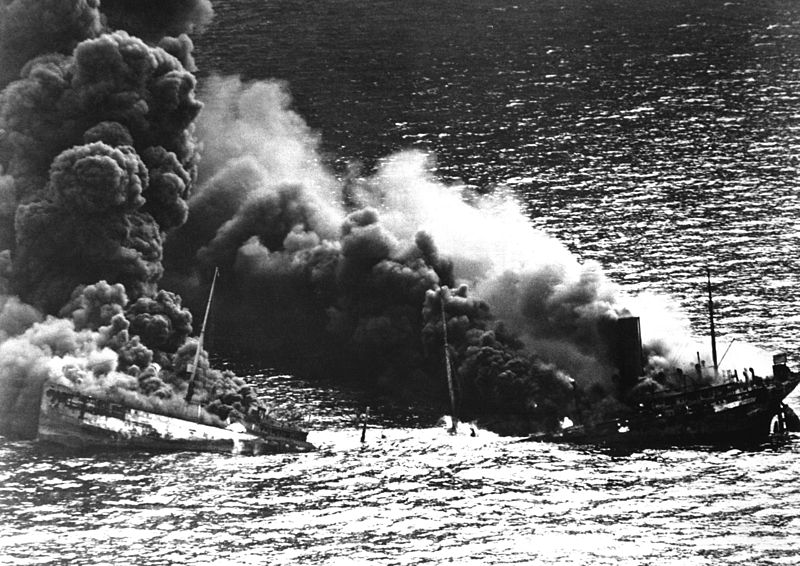Strategy Afloat: Commerce Raiding
November 6 is an important date in the history of one of the Civil War’s most successful commerce raiders, the CSS Shenandoah. This day 150 years ago she took the second of her 38 victims; exactly a year later she struck her colors in Liverpool, becoming the last Confederate force in the world to surrender. She belongs to the pantheon of raiders stretching back centuries, and embodies a strategy still used today to operate against an enemy’s commerce and shipping.
stretching back centuries, and embodies a strategy still used today to operate against an enemy’s commerce and shipping.
Commerce raiding (guerre de course in French) is a strategy employed by navies against the seaborne commerce of an enemy. The idea is to disrupt enemy trade, thereby causing havoc with the enemy economy and war effort – a psychological and tactical attack all at once. Captains and crews also stood to make a lot of money, as they received prize money based on the value of each ship captured or destroyed. Guerre de course first started with government-licensed privateers; to cite just one famous example, Sir Francis Drake made a fortune stalking Spanish galleons.
The 19th Century saw commerce raiding formalized, with navies commissioning purpose-built warships (Shenandoah and her cousins like Alabama, Florida, and others) to hunt and destroy enemy shipping. During the Civil War, the former three set records for the numbers of ships taken, records which still stand today for Americans. Their successes panicked the North and stressed the economy, but were never numerous enough to truly make a decisive strategic difference.
The advent of radio, satellites, and airplanes have made surface-based commerce raiding more difficult, but not impossible. German surface raiders in both World Wars (most notably Emden in 1914 and Scharnhorst, Gneisenau, Admiral Graf Spee, Admiral Scheer, Admiral Hipper, Prinz Eugen, and Atlantis 1939-43) sank numerous Allied ships on the high seas. Honorable mention must go to the U.S. quarantine of Cuba in 1962, which involved stopping (but not sinking) Soviet ships.
Today, guerre de course is most recognizable as practiced by the submarine. German U-Boats aggressively targeted British commerce, and came very close to strangling their war effort in both 1914-18 and 1939-1945. In the Pacific, U.S. submarines virtually wiped the Japanese merchant marine off the ocean in World War II, crippling Japan’s ability to transfer troops and resources throughout their far-flung empire.
We have not seen a true guerre de course in quite some time. In future, it would undoubtedly look more like the 20th Century than the 19th. But although the technology changes, the strategy is still the same as that practiced by the Confederates in the Civil War.
Top: CSS Shenandoah burning Union whalers in the Bering Sea, 1865.
Bottom: Tanker Dixie Arrow burns and sinks off North Carolina’s Outer Banks in 1942 after being torpedoed by German U-71.
